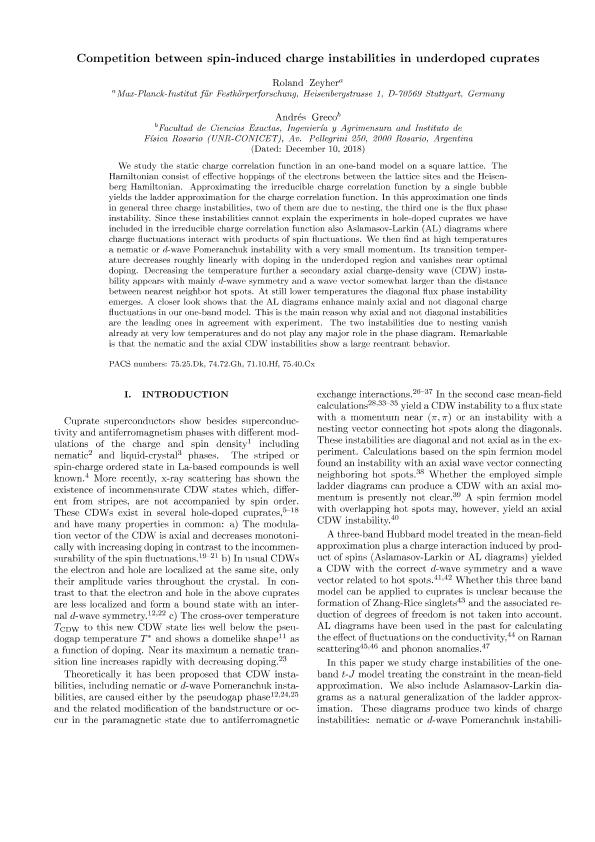Artículo
Competition between spin-induced charge instabilities in underdoped cuprates
Fecha de publicación:
12/2018
Editorial:
American Physical Society
Revista:
Physical Review B
ISSN:
0163-1829
Idioma:
Inglés
Tipo de recurso:
Artículo publicado
Clasificación temática:
Resumen
We study the static charge correlation function in a one-band model on a square lattice. The Hamiltonian consists of effective hoppings of the electrons between the lattice sites and the Heisenberg Hamiltonian. Approximating the irreducible charge correlation function by a single bubble yields the ladder approximation for the charge correlation function. In this approximation, one finds, in general, three charge instabilities - two of them are due to nesting, the third one is the flux phase instability. Since these instabilities cannot explain the experiments in hole-doped cuprates, we have included in the irreducible charge correlation function also Aslamasov-Larkin (AL) diagrams where charge fluctuations interact with products of spin fluctuations. We then find at high temperatures a nematic or d-wave Pomeranchuk instability with a very small momentum. Its transition temperature decreases roughly linearly with doping in the underdoped region and vanishes near optimal doping. Decreasing the temperature further, a secondary axial charge-density wave (CDW) instability appears with mainly d-wave symmetry and a wave vector somewhat larger than the distance between nearest-neighbor hot spots. At still lower temperatures, the diagonal flux phase instability emerges. A closer look shows that the AL diagrams enhance mainly axial and not diagonal charge fluctuations in our one-band model. This is the main reason why axial and not diagonal instabilities are the leading ones in agreement with experiment. The two instabilities due to nesting vanish already at very low temperatures and do not play any major role in the phase diagram. Remarkable is that the nematic and the axial CDW instabilities show a large reentrant behavior.
Palabras clave:
cupratos
,
charge order
Archivos asociados
Licencia
Identificadores
Colecciones
Articulos(CCT - ROSARIO)
Articulos de CTRO.CIENTIFICO TECNOL.CONICET - ROSARIO
Articulos de CTRO.CIENTIFICO TECNOL.CONICET - ROSARIO
Citación
Zeyher, Roland; Greco, Andres Francisco; Competition between spin-induced charge instabilities in underdoped cuprates; American Physical Society; Physical Review B; 98; 22; 12-2018; 1-12
Compartir
Altmétricas




